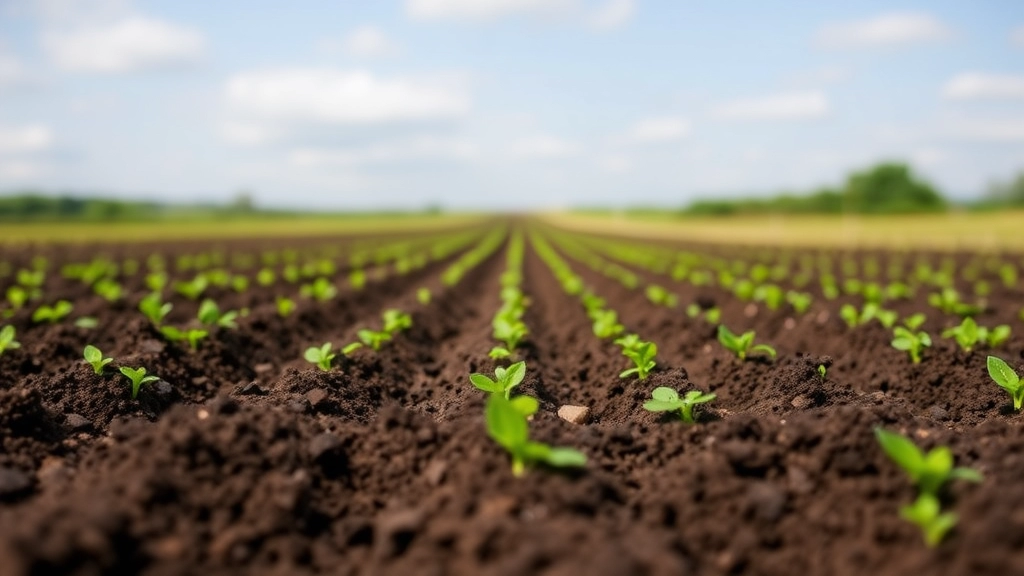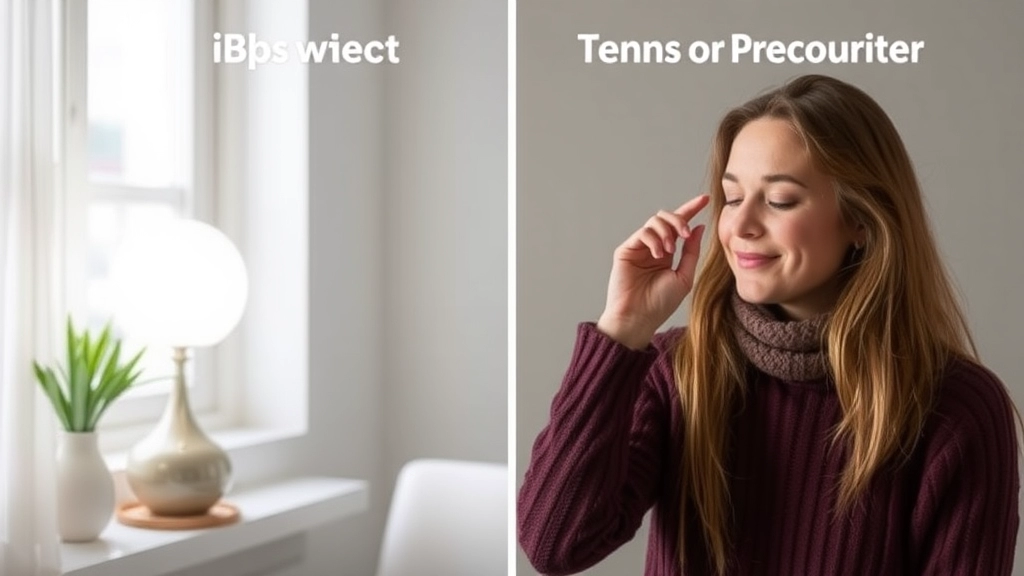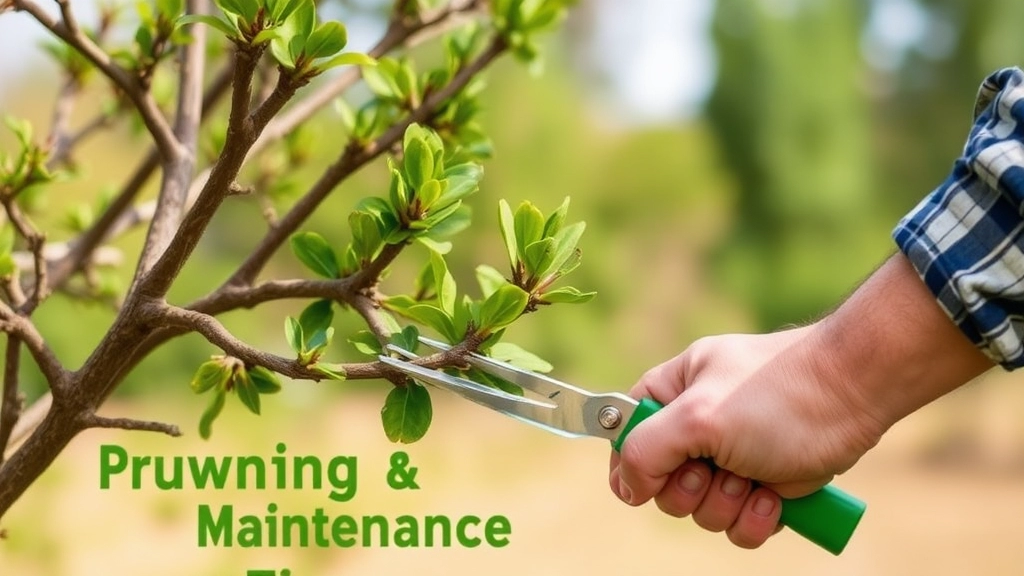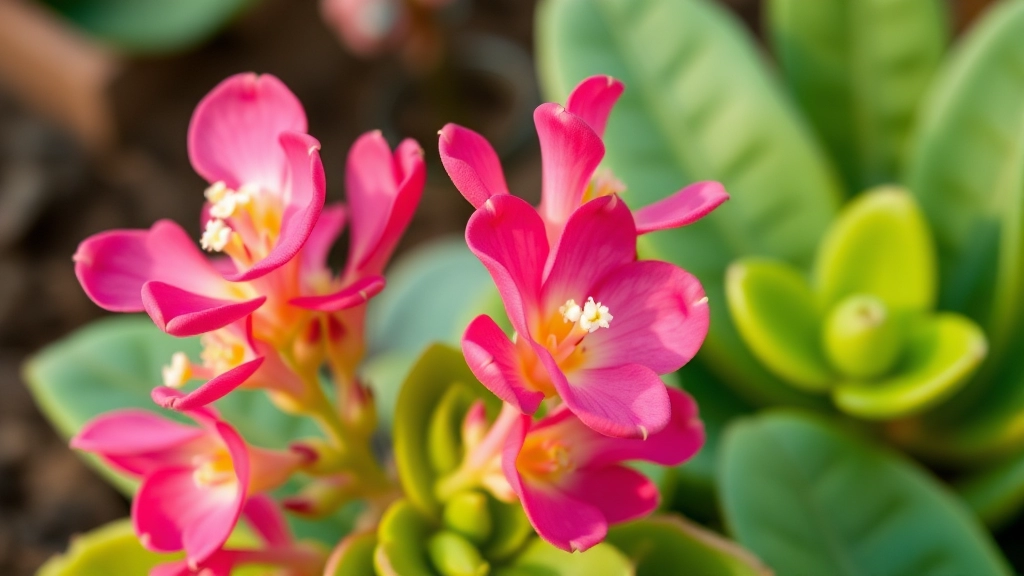Kalanchoe Blossfeldiana Growth Guide
As a passionate gardener and Kalanchoe enthusiast, I’m excited to share my insights on kalanchoe blossfeldiana growth. These vibrant succulents are not just eye-catching; they’re also surprisingly easy to care for once you understand their needs. From optimal light conditions to watering techniques, I’ll guide you through every aspect of nurturing these beautiful plants.
In this comprehensive guide, we’ll explore the ideal growing conditions, soil requirements, watering guidelines, and much more. Whether you’re a seasoned plant parent or a beginner, you’ll find valuable tips to help your Kalanchoe Blossfeldiana thrive and produce stunning blooms. Let’s dive in and unlock the secrets to successful Kalanchoe cultivation!
Optimal Growing Conditions for Kalanchoe Blossfeldiana
Ever wondered how to make your Kalanchoe Blossfeldiana thrive? Let’s dive in.
These succulents are pretty chill, but they’ve got their preferences.
First up, they love bright, indirect light. Think sunny windowsill, but not scorching midday sun.
Temperature-wise, they’re not fussy. Room temp suits them fine.
But here’s the kicker: they hate soggy feet. Good drainage is key.
Humidity? Not a big deal for these tough cookies.
Air circulation? Yeah, they dig it. Keeps those pesky fungal issues at bay.
Now, soil’s a big one. We’ll get into that next, but think well-draining and slightly acidic.
Remember, these plants are survivors. They can handle a bit of neglect.
But give them the right conditions? They’ll reward you with stunning blooms.
So, what’s the secret sauce? Balance. Not too wet, not too dry. Not too hot, not too cold.
Get that right, and you’re golden. Your Kalanchoe will be the envy of the neighbourhood.
Next up, we’ll dig into the nitty-gritty of soil. Trust me, it’s more exciting than it sounds.
Soil Requirements and Preparation

Alright, let’s talk dirt – literally. When it comes to Kalanchoe Blossfeldiana, the soil you use can make or break your plant’s success. Trust me, I’ve learned this the hard way.
The Soil Scoop
These succulents are picky eaters, and they’ve got a thing for well-draining soil. Here’s the deal:
- Go for a mix that’s about 50% potting soil and 50% perlite or coarse sand
- Avoid heavy, clay-like soils – they’re a no-go
- pH should be slightly acidic to neutral (around 6.0 to 7.0)
DIY Soil Mix
Want to save some cash? Mix your own:
- 2 parts regular potting soil
- 1 part perlite
- 1 part coarse sand
Boom! You’ve got yourself a Kalanchoe-approved mix.
Prep Like a Pro
Before you plant, here’s what you need to do:
- Clean your pot (if reusing)
- Add a layer of gravel at the bottom for extra drainage
- Fill the pot about 2/3 full with your soil mix
- Make a hole for your plant
- Gently place the Kalanchoe in and fill around it
Pro Tip: Don’t pack the soil too tight. These guys like their roots to breathe.
Remember, good soil is like a good foundation for a house. Get this right, and your Kalanchoe will thank you with gorgeous blooms. Trust me, it’s worth the effort.
So, ready to get your hands dirty? Your Kalanchoe Blossfeldiana is counting on you to nail these soil requirements and preparation steps. Let’s make it happen!
Watering Guidelines for Healthy Growth
Alright, let’s talk about watering your Kalanchoe Blossfeldiana. It’s not rocket science, but get it wrong, and you’re in for a world of plant drama.
First things first: these succulents hate wet feet. Seriously.
So, how often should you water? Here’s the deal:
- Water when the top inch of soil feels dry
- In summer, that might be once a week
- In winter, maybe once every two weeks
But here’s the kicker: it’s not just about frequency. It’s about technique.
When you water, go all in. Drench that soil until water runs out the bottom.
Then, and this is crucial, let it drain completely. No sitting water, folks.
Got your Kalanchoe in a decorative pot without drainage? Big mistake. Huge.
Either drill some holes or use it as a cachepot. Your plant will thank you.
Now, here’s a pro tip: water in the morning. Gives the plant all day to soak it up.
Watering at night? You’re asking for fungal problems. Don’t do it.
Signs of overwatering:
- Yellowing leaves
- Soft, mushy stems
- Mold on the soil surface
Underwatering looks like:
- Droopy leaves
- Crispy, brown leaf edges
- Slow growth
Remember, it’s easier to save an underwatered Kalanchoe than an overwatered one.
When in doubt, wait an extra day before watering. These plants are tough cookies.
Bottom line: Kalanchoe Blossfeldiana likes its water like I like my visits to the dentist – infrequent but thorough.
Get this watering gig right, and you’re well on your way to Kalanchoe greatness. Trust me, your plant will be the envy of the neighbourhood.
Light and Temperature Preferences

Alright, let’s chat about what makes Kalanchoe Blossfeldiana tick when it comes to light and temp. These little beauties are pretty chill, but they’ve got their preferences.
Light: The Goldilocks Zone
Kalanchoes are sun-lovers, but they’re not about that scorching desert life. Here’s the deal:
- Bright, indirect light is their jam
- 4-6 hours of sunlight daily keeps ’em happy
- Morning sun? Perfect. Afternoon sun? Might be a bit much
Pro tip: If your Kalanchoe’s leaves are looking pale or stretchy, it’s probably begging for more light. On the flip side, if you see brown spots, it might be getting sunburned. Easy fix – just shuffle it around until you find its sweet spot.
Temperature: Keeping It Comfy
These plants are tough cookies, but they’ve got their limits:
- Ideal temp range: 15-21°C (60-70°F)
- Can handle down to 10°C (50°F), but they’ll sulk
- Above 27°C (80°F)? They’ll survive, but won’t thrive
Here’s the kicker – Kalanchoes hate drafts. Keep ’em away from AC vents and chilly windows in winter.
Seasonal Shifts
In summer, your Kalanchoe might fancy a holiday outdoors. Just ease it into the transition:
- Start with a shaded spot
- Gradually move to brighter areas
- Bring it back inside before the nights get nippy
Winter? They’re not fans. If you live somewhere that gets proper cold, keep your Kalanchoe cosy indoors.
Remember, Kalanchoe Blossfeldiana’s light and temperature preferences aren’t rocket science. Give ’em bright light, keep ’em warm (but not hot), and they’ll reward you with those gorgeous blooms. It’s all about finding that sweet spot in your space.
Fertilizing Kalanchoe Blossfeldiana
Hey, let’s talk about feeding your Kalanchoe Blossfeldiana.
These beauties aren’t too fussy, but they do appreciate a good meal.
Here’s the deal:
- During growing season (spring and summer), feed ’em every 2-4 weeks.
- Use a balanced, water-soluble fertilizer. Nothing fancy needed.
- Dilute it to half strength. These guys don’t like overeating.
- In autumn and winter, ease off. Once a month is plenty.
Quick tip: Ever noticed yellow leaves? Might be overfertilizing. Ease up a bit.
Remember, less is more with Kalanchoe. They’re not greedy plants.
Got questions about your plant looking a bit peaky? Hit me up.
Fertilizing right can make your Kalanchoe bloom like crazy. Trust me, it’s worth it.
Pruning and Maintenance Tips

Alright, let’s chat about keeping your Kalanchoe Blossfeldiana looking its best. Trust me, a little pruning goes a long way with these beauties.
Why bother with pruning?
Simple: it keeps your plant healthy, shapely, and blooming like crazy. Plus, it’s oddly satisfying. Here’s the lowdown:
- Deadheading: Snip off those spent flowers. It’s like giving your plant a mini-makeover and encourages more blooms.
- Shape up: Got a leggy Kalanchoe? No worries. Trim those long stems back to keep it compact and bushy.
- Rejuvenation: If your plant’s looking a bit worse for wear, don’t chuck it. A good pruning can work wonders.
When to prune?
Timing’s key here. I usually go for it:
- After flowering
- In early spring
- When the plant looks overgrown
How to prune like a pro
- Grab clean, sharp scissors or pruning shears.
- Cut just above a leaf node (where leaves meet the stem).
- Remove any dead, diseased, or yellowing leaves.
- For shaping, cut back to your desired length.
Pro tip: Don’t go overboard. Aim to remove no more than 1/3 of the plant at a time.
Maintenance beyond pruning
Pruning’s not the only game in town. Here’s what else you can do:
- Dust those leaves: A quick wipe with a damp cloth keeps them looking fresh and photosynthesizing efficiently.
- Rotate regularly: This ensures all sides get equal light exposure.
- Check for pests: A quick once-over can catch issues early.
Remember, Kalanchoe Blossfeldiana isn’t high-maintenance, but a little TLC goes a long way. Keep an eye on it, give it a trim when needed, and you’ll have a stunning, healthy plant that’ll be the envy of your plant-loving mates.
Common Pests and Diseases
Let’s chat about the nasty critters and issues that can mess with your Kalanchoe.
Trust me, I’ve seen my fair share of plant problems, and Kalanchoe’s no exception.
Here’s the deal:
Pests:
- Mealybugs: These little cotton-ball lookalikes love to suck the life out of your plant.
- Spider mites: Tiny but mighty, they’ll leave your leaves looking speckled.
- Aphids: Green, soft-bodied bugs that cluster on new growth.
Diseases:
- Root rot: Overwatering’s the culprit here. Your plant’s basically drowning.
- Powdery mildew: Looks like someone dusted your plant with flour.
- Leaf spot: Brown or black spots on leaves. Not cute.
How to deal?
For pests:
- Wipe ’em off with a damp cloth
- Use insecticidal soap
- Try neem oil (it’s my go-to)
For diseases:
- Cut back on watering
- Improve air circulation
- Remove affected parts
Prevention’s key, folks.
Keep your Kalanchoe happy with proper care, and you’ll dodge most of these issues.
Remember: A stressed plant’s an easy target.
So, keep an eye out for these common Kalanchoe pests and diseases, and act fast if you spot ’em.
Propagation Methods

Alright, let’s dive into how we can make more of these gorgeous Kalanchoe Blossfeldiana plants. Trust me, it’s easier than you might think!
Leaf Cuttings: The Quick and Easy Way
Here’s a cool trick I learned:
- Snip off a healthy leaf
- Let it dry for a day or two (this helps prevent rotting)
- Stick it in some well-draining soil
- Keep it moist but not soaking
- Wait for the magic to happen!
In a few weeks, you’ll see tiny plantlets sprouting from the base of the leaf. It’s like watching your own little Kalanchoe nursery!
Stem Cuttings: For When You Want More, Faster
This method’s a bit more involved, but it’s my go-to when I want to bulk up my Kalanchoe collection:
- Cut a 3-4 inch stem just below a leaf node
- Remove the lower leaves
- Dip the cut end in rooting hormone (optional, but it helps)
- Plant in a mix of peat moss and perlite
- Keep it warm and humid
Pro tip: I like to cover the pot with a clear plastic bag to create a mini greenhouse effect. Just remember to poke some holes for air circulation!
Division: The “Two Birds, One Stone” Approach
This one’s perfect if your Kalanchoe’s getting a bit too big for its boots:
- Carefully remove the plant from its pot
- Gently separate the root ball into smaller sections
- Replant each section in its own pot
- Water well and treat them like mature plants
It’s like getting free plants while also giving your original one a makeover. Win-win!
Seeds: For the Patient Gardener
I’ll be honest, this method takes the longest, but it’s pretty rewarding:
- Collect seeds from spent flowers
- Sow them on the surface of moist, well-draining soil
- Cover the container with plastic wrap
- Place in bright, indirect light
- Keep soil moist and wait for germination (usually 1-2 weeks)
Remember, patience is key here. These little guys take their sweet time to grow, but the result is worth it!
So there you have it – four solid ways to propagate your Kalanchoe Blossfeldiana. Whether you’re a newbie or a green-thumbed pro, there’s a method here that’ll work for you. Give it a shot and watch your Kalanchoe family grow!
Seasonal Care and Blooming Cycle
Alright, let’s chat about keeping your Kalanchoe Blossfeldiana happy all year round.
These little beauties have their own rhythm, you know?
Spring and summer? That’s when they’re living their best life.
But here’s the kicker – they bloom in winter. Weird, right?
So, how do we roll with their seasons?
Spring/Summer Care:
- Water more often (but don’t drown ’em)
- Feed ’em every 2-3 weeks
- Give ’em plenty of bright, indirect light
Autumn/Winter Care:
- Cut back on watering
- Stop fertilizing
- Move ’em to a cooler spot
Now, about that winter bloom…
Want to see those flowers? You gotta play it smart.
From October, give your Kalanchoe:
- 14 hours of darkness daily
- 10 hours of bright light
- Keep this up for 6 weeks
Do this right, and boom! You’ll have a flower show in about 6-8 weeks.
Remember, Kalanchoes are tough cookies. They can handle a bit of neglect.
But treat ’em right, and they’ll reward you with a stunning winter display.
Any trouble? Just hit me up. We’ll sort it out together.
Troubleshooting Growth Issues
Hey there, fellow plant enthusiasts! Let’s chat about those pesky growth issues that can pop up with our Kalanchoe Blossfeldiana. Trust me, I’ve been there, scratching my head and wondering why my plant’s looking a bit off. But don’t worry, we’ll sort this out together.
Common Kalanchoe Conundrums
1. Droopy leaves: What’s up with that?
- Overwatering is often the culprit
- Check your drainage game – is it on point?
- Tip: Let the soil dry out between waterings
2. Yellow leaves: Not the sunny look we’re after
- Could be too much sun (yeah, even sun-lovers can get burnt)
- Nutrient deficiency might be the issue
- Action plan: Adjust light exposure and consider a gentle fertiliser
3. Leggy growth: When your plant’s reaching for the stars
- Usually means it’s not getting enough light
- Solution: Move it to a brighter spot, but ease it in to avoid shock
4. No blooms: Where are those beautiful flowers?
- Might need more light or a change in temperature
- Check your fertilising routine – too much can hinder blooming
- Patience is key – sometimes they just need time
Quick Fixes and Prevention
- Soil check: Is it draining well? If not, mix in some perlite or sand
- Light audit: Bright, indirect light is the sweet spot
- Temperature control: Keep it between 15-21°C (60-70°F)
- Pruning power: Regular trims encourage bushier growth
Remember, every plant’s a bit different. What works for one might not work for another. It’s all about getting to know your Kalanchoe and giving it what it needs.
Troubleshooting growth issues with Kalanchoe Blossfeldiana doesn’t have to be a headache. With a bit of attention and these tips, you’ll be back on track to a thriving, blooming beauty in no time. Keep at it, plant pals!
FAQs about Kalanchoe Blossfeldiana Growth
1. How often should I water my Kalanchoe Blossfeldiana?
Water your Kalanchoe when the top inch of soil feels dry. In summer, this might be once a week, while in winter, it could be every two weeks. Always ensure good drainage to prevent root rot.
2. What kind of light does Kalanchoe Blossfeldiana prefer?
Kalanchoe Blossfeldiana thrives in bright, indirect light. It needs about 4-6 hours of sunlight daily. Morning sun is ideal, but protect it from harsh afternoon rays.
3. How can I encourage my Kalanchoe to bloom?
To encourage blooming, provide your Kalanchoe with 14 hours of complete darkness and 10 hours of bright light daily for about 6 weeks, starting in October. This mimics the plant’s natural blooming cycle.
4. What’s the best soil mix for Kalanchoe Blossfeldiana?
Use a well-draining soil mix. A good DIY mix is 2 parts regular potting soil, 1 part perlite, and 1 part coarse sand. This ensures good drainage while retaining enough moisture.
5. How do I propagate my Kalanchoe Blossfeldiana?
You can propagate Kalanchoe through leaf cuttings, stem cuttings, or division. For leaf cuttings, simply place a healthy leaf on well-draining soil and keep it moist. Stem cuttings and division are faster methods for larger plants.
6. Why are my Kalanchoe’s leaves turning yellow?
Yellowing leaves can be caused by overwatering, nutrient deficiency, or too much direct sunlight. Check your watering routine, consider fertilizing, and adjust light exposure if needed. Always start with the simplest solution first.
7. How often should I fertilize my Kalanchoe?
Fertilize every 2-4 weeks during the growing season (spring and summer) with a balanced, water-soluble fertilizer diluted to half strength. Reduce to once a month or stop completely in autumn and winter.
8. Can Kalanchoe Blossfeldiana be grown outdoors?
Yes, Kalanchoe can be grown outdoors in warm climates or during summer in cooler regions. However, it’s sensitive to frost and extreme heat. Bring it indoors when temperatures drop below 10°C (50°F).

